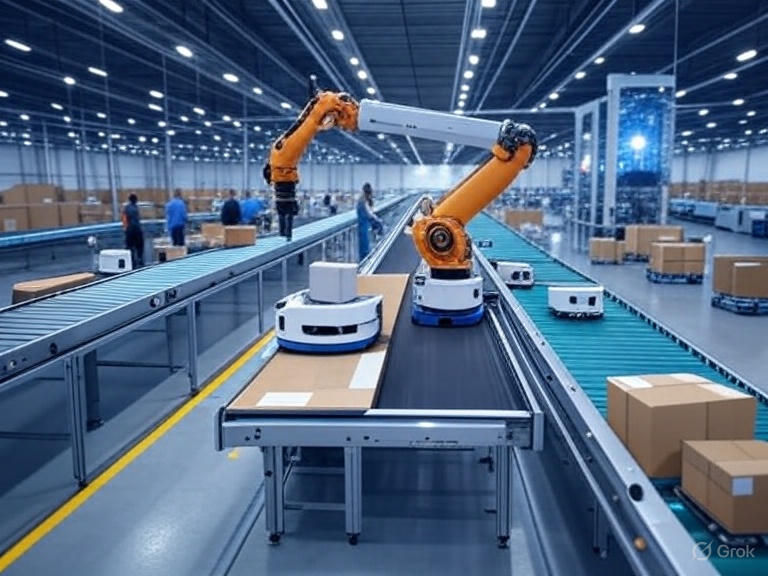Autonomous Supply Chains from Order to Delivery
- David Heath
- Jul 23
- 3 min read

In 2025, supply chains are evolving into autonomous, self-healing systems, thanks to the integration of artificial intelligence (AI) with Managed File Transfer (MFT) and real-time event streams. These technologies enable logistics networks to detect disruptions, make decisions, and reroute shipments in real time, minimizing delays and costs. This article explores how AI-integrated MFT and event streams power self-healing logistics, supported by recent 2025 success metrics such as a 50% backlog reduction and double-digit cost savings.
What Are Autonomous Supply Chains?
Autonomous supply chains operate independently, using AI to analyze data, predict disruptions, and execute solutions without human intervention. Unlike traditional systems that rely on manual oversight, these advanced networks adapt to challenges—like natural disasters or supplier delays—in real time, ensuring seamless order-to-delivery processes.
The key enablers of this autonomy are:
AI-Integrated Managed File Transfer (MFT): MFT securely transfers data between systems. When paired with AI, it analyzes this data to optimize decisions, such as rerouting shipments or adjusting inventory.
Event Streams: These provide a continuous flow of real-time data—e.g., shipment updates, weather conditions, or inventory levels—allowing AI to monitor and respond to events instantly.
Together, they create self-healing logistics, where the supply chain automatically recovers from disruptions.
How AI-Integrated MFT and Event Streams Work
Real-Time Disruption Detection
Event streams deliver live updates from across the supply chain. For example, if a storm delays a shipment, the system receives immediate data about the disruption. AI processes this information, identifies the issue, and evaluates alternatives—all within seconds.
Self-Healing in Action
Self-healing logistics leverages AI to:
Predict: Analyze historical and real-time data to anticipate disruptions.
Optimize: Assess options (e.g., alternative routes or suppliers) based on cost, time, and availability.
Execute: Automatically implement the best solution, such as rerouting a shipment.
Scenario: A truck carrying goods is stuck due to a road closure. The AI-integrated MFT system receives event stream data, analyzes nearby routes, and reroutes the truck to a faster path, notifying all stakeholders instantly. This eliminates delays that would have required hours of manual coordination in a traditional setup.
2025 Success Metrics
The impact of these technologies is evident in 2025 data, showcasing significant improvements:
50% Backlog Reduction
Companies using AI-integrated MFT and event streams have cut backlogs—unprocessed orders or shipments—by 50%. This is driven by:
Faster decision-making through real-time data analysis.
Automated workflows that eliminate bottlenecks.
For instance, a retailer might clear delayed orders twice as fast by automatically redistributing inventory based on AI insights.
Double-Digit Cost Savings
Adopters report cost reductions in the double digits, attributed to:
Lower Labor Costs: Fewer manual interventions reduce staffing needs.
Optimized Operations: AI minimizes fuel and storage expenses by selecting efficient routes and inventory levels.
Disruption Mitigation: Quick responses prevent costly delays.
A logistics firm, for example, might save 15% on fuel by rerouting shipments dynamically, avoiding congested or disrupted areas.
Real-World Impact
Consider a 2025 case: a global manufacturer faces a port strike delaying critical components. Its autonomous supply chain, powered by AI-integrated MFT and event streams, detects the issue via real-time data, identifies an alternative port 200 miles away, and reroutes shipments—all within 30 minutes. The result? Production stays on schedule, and costs remain 20% below the industry average for similar disruptions.
Challenges to Consider
While transformative, implementing these technologies requires:
Data Security: Protecting sensitive supply chain data during transfers.
Investment: Upfront costs for AI, MFT systems, and training.
Integration: Ensuring compatibility with existing infrastructure.
Conclusion
AI-integrated MFT and event streams are redefining supply chains, enabling autonomous, self-healing logistics that adapt to disruptions in real time. The 2025 metrics—50% backlog reduction and double-digit cost savings—prove their value, offering efficiency and resilience. As these technologies mature, they promise to set a new standard for supply chain management, delivering goods from order to delivery with unprecedented speed and reliability.
By David Heath
Listen to a podcast about this article on







Comments